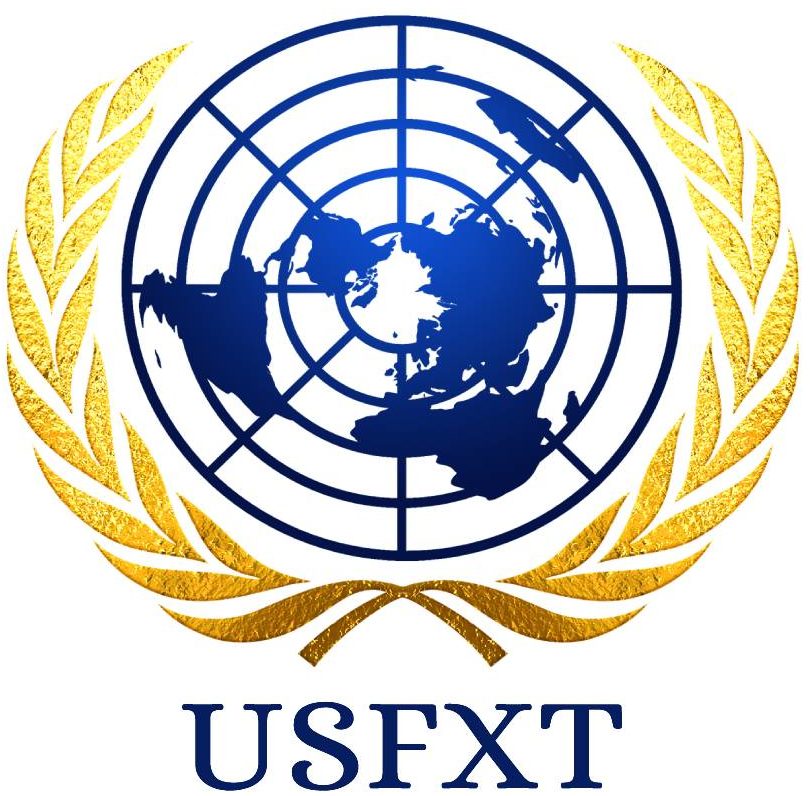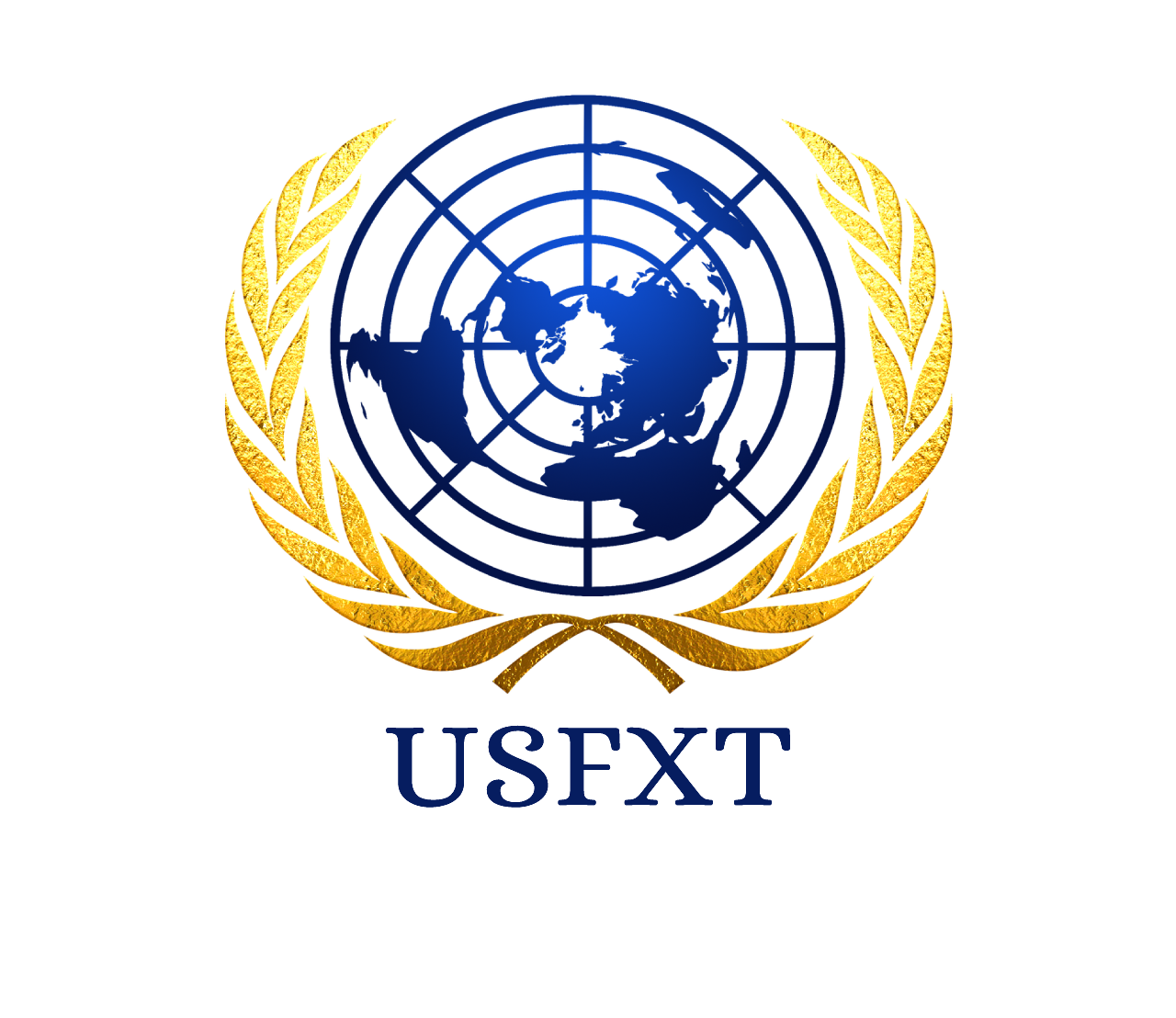Forex Trading: What is Forex? FX Trading Explained
Categories:
learn forex trading
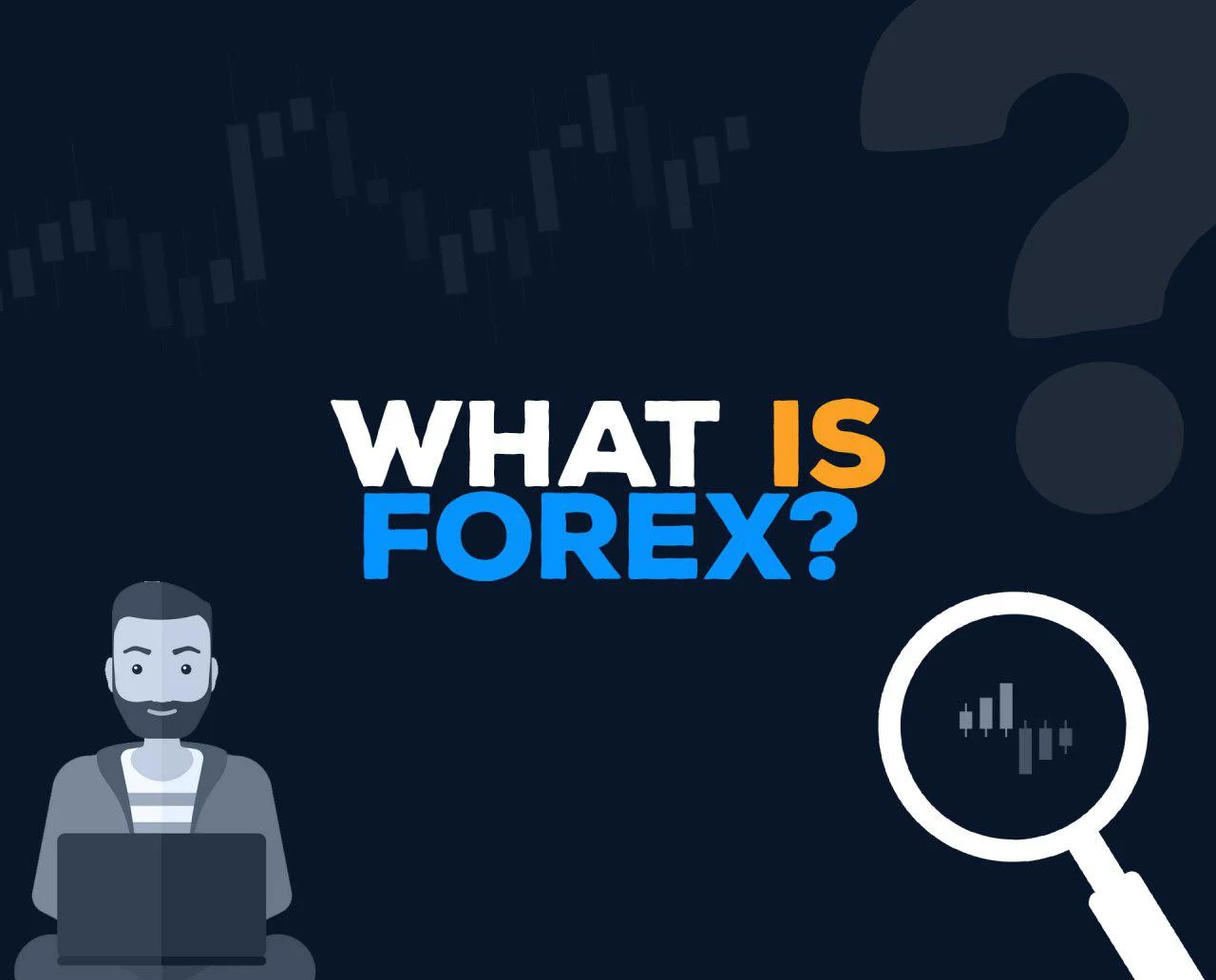
Course Info
Curriculum
About Course
FOREX TRADING: WHAT IS FOREX?
Forex trading is a term used to describe individuals that are engaged in the active exchange of foreign currencies, often for the purpose of financial benefit or gain. That can take on the form of speculators, who are looking to buy or sell a currency with the goal of profiting from the currency’s price movement; or it can be a hedger that’s looking to protect their accounts in the event of an adverse move against their own currency positions. The term ‘forex trader’ may describe an individual trader on a retail platform, a bank…FOREX TRADING: WHAT IS FOREX?
Forex trading is a term used to describe individuals that are engaged in the active exchange of foreign currencies, often for the purpose of financial benefit or gain. That can take on the form of speculators, who are looking to buy or sell a currency with the goal of profiting from the currency’s price movement; or it can be a hedger that’s looking to protect their accounts in the event of an adverse move against their own currency positions. The term ‘forex trader’ may describe an individual trader on a retail platform, a bank trader utilizing their institutional platform, or hedgers who may be either managing their own risk or outsourcing that function to a bank or money manager to manage the risk for them.FOREX TRADING: THE FX MARKET
The foreign exchange market, or forex (FX) for short, is a decentralized market place that facilitates the buying and selling of different currencies. This takes place over the counter (OTC) instead of on a centralized exchange. Without knowing it, you have probably already participated in the foreign exchange market by ordering imported products such as clothing or shoes, or more obviously, buying foreign currency when on vacation. Traders may be drawn to forex for several reasons, including:- The size of the FX market
- A wide variety of currencies to trade
- Differing levels of volatility
- Low transaction costs
- 24 hours a day trading during the week
FOREX TRADING: TWO SIDES TO EVERY MARKET
One unique aspect of the Forex market is the manner in which prices are quoted. Because currencies are the base of the financial system, the only way to quote a currency is by using other currencies. This creates a relative valuation metric that may sound confusing at first, but can become more normalized the longer that one works with this two-sided convention. Forex trading in a pair does offer the trader a bit of additional flexibility, by allowing the trader or investor the ability to voice their trade against the currency that they feel most appropriate. Let’s take the Euro for example, and let’s say a trader has optimistic projections for the European economy and would thusly like to get long the currency. But – let’s say this investor is also bullish for the US economy, but is bearish for the UK economy. Well, in this example, the investor isn’t forced to buy the Euro against the US Dollar (which would be a long EUR/USD trade); and they can, instead, buy the Euro against the British Pound (going long EUR/GBP). This affords the investor or trader that extra bit of flexibility, allowing them to avoid ‘going short’ the US Dollar to buy the Euro and, instead, allowing them to buy the Euro while going short the British Pound.FOREX TRADING: BASE V/S COUNTER CURRENCIES
One important distinction of a Forex quote is the convention: The first currency listed in the quote is known as the ‘base’ currency of the pair, and this is the asset that’s being quoted. The second currency in the pair is known as the ‘counter’ currency, and this is the convention of the quote, or the currency that’s being used to define the value of the first currency in the pair.LET’S TAKE EUR/USD AS AN EXAMPLE…
The Euro is the first currency in the quote, so the Euro would be the base currency in the EUR/USD currency pair. The US Dollar is the second currency in the quote, and this is the currency that the EUR/USD quote is using to define the value of the Euro. So, let’s say that the EUR/USD quote is 1.3000. That would mean that 1 Euro is worth $1.30. If the price moves up to $1.35 – then the Euro would have increased in value and, on a relative basis, the US Dollar would’ve decreased in value. If an investor was bearish the Euro but bullish on the US Dollar, they could choose to ‘short’ the pair, expecting prices to fall; after which they could ‘cover’ the trade by buying it back at a lower price, and pocketing the difference.FOREX TRADING: THE FOREX MARKET EXPLAINED
In a nutshell, the foreign exchange market works like many other markets in that it’s driven by supply and demand. Using a very basic example, if there is a strong demand for the US Dollar from European citizens holding Euros, they will exchange their Euros into Dollars. The value of the US Dollar will rise while the value of the Euro will fall. Keep in mind that this transaction only affects the EUR/USD currency pair and will not for example, cause the USD to depreciate against the Japanese Yen.
FOREX TRADING: WHAT DRIVES THE FLOWS?
In reality, the above example is only one of many factors that can move the FX market. Others include broad macro-economic events like the election of a new president, or country specific factors such as the prevailing interest rate, GDP, unemployment, inflation and the debt to GDP ratio, to name a few. Top traders make use of an economic calendar to stay up to date with these and other important economic releases that can move the market. On a longer-term basis, one major driver of Forex prices are interest rates from the related economy, as this can have a direct impact of holding a currency either long or short.WHAT EXPLAINS THE POPULARITY?
The foreign exchange market allows large institutions, governments, retail traders and private individuals to exchange one currency for another and the ‘core’ of the FX market is what’s known as the interbank market, which is where liquidity providers trade amongst each other. The benefit of having forex trade between global banks and liquidity providers is that forex can be traded around the clock (during the week). As the trading session in Asia comes to a close, the European and UK banks come online before handing over to the US. The full trading day ends when the US session leads into the Asian session for the following day. What makes this market even more attractive to traders is The around-the-clock liquidity that is often available. This means that traders can easily enter and exit positions as there are many willing buyers and sellers for foreign exchange.FOREX TRADING: HOW DOES IT WORK?
This is very similar to other markets: If you think the value of a currency is going to go up (appreciate), you can look to buy the currency. This is known as going “long”. If you feel the currency is going to go down (depreciate), you sell that currency. This is known as going “short”.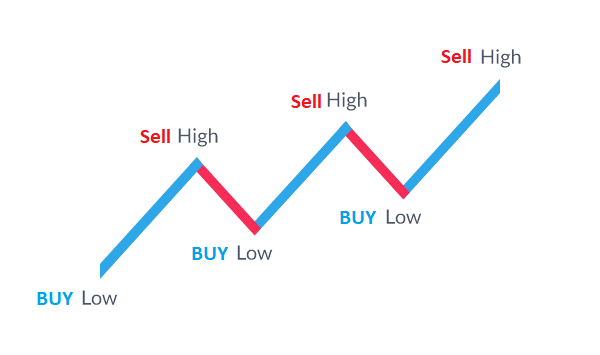
FOREX TRADING: WHO ARE THE MAJOR PLAYERS?
There are essentially two types of traders in the foreign exchange market: hedgers and speculators. Hedgers are always looking to avoid extreme movements in the exchange rate. Think of big conglomerates like Exxon and how they look to reduce their exposure to foreign currency movements. Speculators, on the other hand, are risk seeking and always looking for volatility in exchange rates to take advantage of. These include large trading desks at the big banks and retail traders.READING A FOREX QUOTE
All traders need to understand how to read a forex quote as this is will determine the price you enter and exit the trade. Looking at the currency quote below, the first currency in the EUR/USD pair is known as the base currency, which is the Euro, while the second currency in this pair (the USD) is known as the variable or quote currency.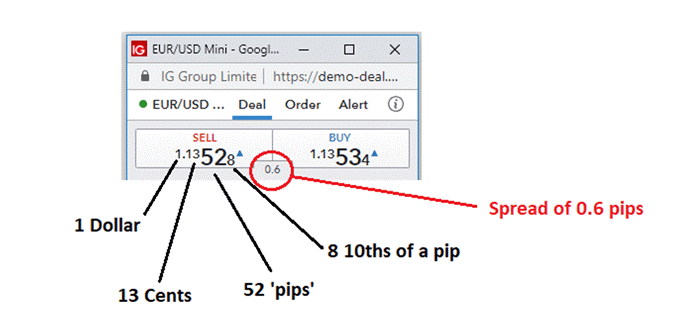 For most FX markets, prices are offered up to five decimals but the first four are the most important. The number to the left of the decimal point indicates one unit of the counter currency, in this example, it is the USD and therefore is $1. The following two digits are the cents, so in this case 13 US cents. The third and fourth digits represent fractions of a cent and are referred to as pips.
It’s key to note that the number in the fourth decimal place is known as a ‘pip’. Should the EUR depreciate against the USD by 100 pips, the new sell price will reflect the lower price of 1.12528 as it will cost less in USD to buy 1 Euro.
Another way of saying the above quoted bid price is: The value of One Euro, in terms of US Dollars, is One Dollar, 13 cents, 52 pips and 8/10th’s of a pip.
To learn more about reading Forex quotes, please check out our article, ‘How to Read Currency Pairs: Forex Quotes Explained.’
For most FX markets, prices are offered up to five decimals but the first four are the most important. The number to the left of the decimal point indicates one unit of the counter currency, in this example, it is the USD and therefore is $1. The following two digits are the cents, so in this case 13 US cents. The third and fourth digits represent fractions of a cent and are referred to as pips.
It’s key to note that the number in the fourth decimal place is known as a ‘pip’. Should the EUR depreciate against the USD by 100 pips, the new sell price will reflect the lower price of 1.12528 as it will cost less in USD to buy 1 Euro.
Another way of saying the above quoted bid price is: The value of One Euro, in terms of US Dollars, is One Dollar, 13 cents, 52 pips and 8/10th’s of a pip.
To learn more about reading Forex quotes, please check out our article, ‘How to Read Currency Pairs: Forex Quotes Explained.’
WHAT IS A ‘PIP’?
Pip stands for ‘percentage in point,’ and this is the base unit of measurement in a currency pair. The value of a pip will differ based on the counter-currency in the pairing. For currency pairs in which USD is the counter-currency, or listed second in the quote, the pip value or cost will often be $1 for a 10k lot of currency, which would also mean a pip value or cost of 10 cents for a 1k lot and $10.00 for a 100k lot. So, if an investor buys a 1k lot of EUR/USD, each pip gained or lost would be worth 10 cents. If the same investor buys a 10k lot of EUR/USD, each pip gained or lost would be worth $1/each. And if the investor buys a 100k lot, the pip value would be $10/per. Running with this example: Let’s say that the investor that bought EUR/USD saw a 50 pip gain. Well, if the investor was using a 1k lot, that 50 pip gain would amount to $5 ($.10 X 50 = 5.00); and an investor using a 10k lot would have a gain of $50 ($1 x 50 = $50). And if the same investor was working with a 100k lot, that gain would be $500 ($10.00 x 50 = $500). Pip cost or value are extremely important data points for forex traders to be aware of, as this is how spreads are communicated; so its very important for traders to ‘know their pips.’ To learn more about pips in Forex, be sure to check out our article ‘What is a Pip? Using Pips in Forex Trading.’FOREX TRADING ON DEMO ACCOUNTS: GAINING EXPERIENCE WITHOUT RISKING HARD CAPITAL
One of the biggest risks or drawbacks of learning a market or learning to trade is the fact that trading can be a costly endeavor, and the risk of financial loss is ever-present when trading actual hard capital on a trading platform. Whenever one buys or sells a Forex pair, they bear the risk of losing money, and for a new trader that’s just learning their ways, this can be an expensive tuition. But many Forex brokers offer demo accounts so that new traders or prospective customers can familiarize themselves with the market, the platform, and the dynamics of forex trading before ever depositing a Dollar, Euro or Pound of their own money. The demo account can offer a simulated environment where a new trader can implement their strategies and manage their trades with fictional capital. This can be an ideal area to learn the dynamics of forex trading – how to trigger positions, how to set stops and how to scale out of trades.FOREX TRADING: WHY TRADE FOREX?
Trading forex has many advantages over other markets as explained below:- Low transaction costs: Typically, forex brokers make their money on the spread provided the trade is opened and closed before any overnight funding charges are applied. Therefore, forex trading is cost effective when weighed up against a market like equities, which attracts a commission charge.
- Low spreads: Bid/Ask spreads are extremely low for major FX pairs due to their liquidity. When trading, the spread is the initial hurdle that needs to be overcome when the market moves in your favor. Any additional pips that move in your favor is pure profit.
- More opportunities to profit: Forex trading allows traders to take speculative positions on currencies going up (appreciating) and going down (depreciating). Furthermore, there are many different forex pairs for traders to spot profitable trades.
- Leverage trading: Trading forex involves the use of leverage. This means that a trader need not pay the full cost of the trade but instead only put down a fraction of the cost. This has the potential to magnify your profits but also your losses. At USFXT we suggest a disciplined approach to risk management by restricting your effective leverage to 10 to one or less.
KEY FOREX TRADING TERMS TO TAKEAWAY
Base currency: This is the first currency that appears when quoting a currency pair. Looking at EUR/USD, the Euro is the base currency. Variable/quote currency: This is the second currency in the quoted currency pair and is the US Dollar in the EUR/USD example. Bid: The bid price is the highest price that a buyer (bidder) is prepared to pay. When you are looking to sell a forex pair this is the price you will see, usually to the left of the quote and is often in red. Ask: This is the opposite of the bid and represents the lowest price a seller is willing to accept. When you are looking to buy a currency pair, this is the price you will see and is usually to the right and in blue. Spread: This is the difference between the bid and the ask price which represents the actual spread in the underlying forex market plus the additional spread added by the broker. Pips/points: A pip or point refers to a one digit move in the 4th decimal place. This is often how traders refer to movements in a currency pair, i.e. GBP/USD rallied 100 points today. Leverage: Leverage allows traders to trade positions while only putting up a fraction of the full value of the trade. This allows traders to control larger positions with a small amount of capital. Leverage amplifies gains AND losses. Margin: This is the amount of money needed to open a leveraged position and is the difference between the full value of your position and the funds being lent to you by the broker. Margin call:When the total capital deposited, plus or minus any profits or losses, dips below a specified level (margin requirement). Liquidity: A currency pair is considered to be liquid if it can easily be bought and sold due to there being many participants trading the currency pair. FREE RESOURCES AND GUIDES TO LEARN FOREX TRADING- If you are just starting out on your trading journey it is essential to understand the basics of forex trading in our free new to forex trading guide.
- We also offer a range of trading guides to supplement your forex knowledge and strategy development.
- Our research team analyzed over 30 million live trades to uncover the traits of successful traders. Incorporate these traits to give yourself an edge in the markets.
- Traders often look to retail client sentiment when trading popular FX markets. DailyFX provides such data, based on IG client sentiment
- The forex market has evolved over centuries. For a summarized account of the most important developments shaping this $5 trillion a day market read our history of forex article.

